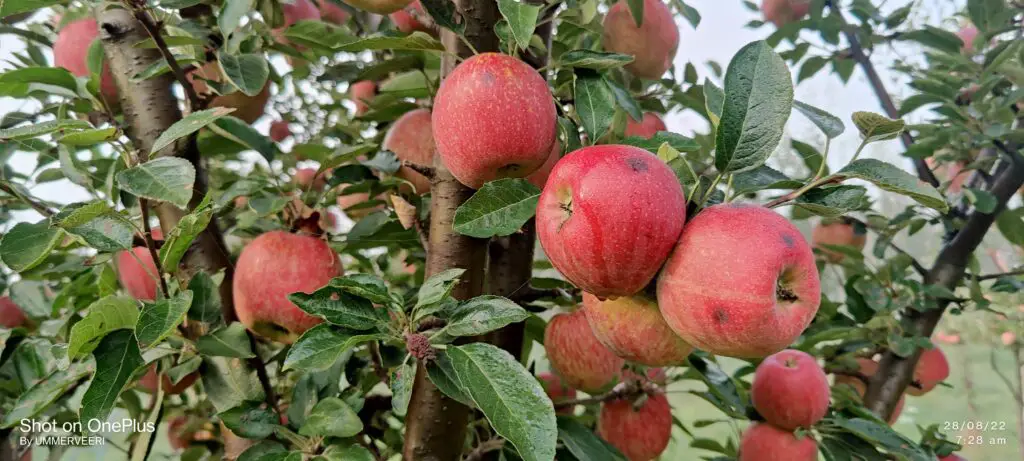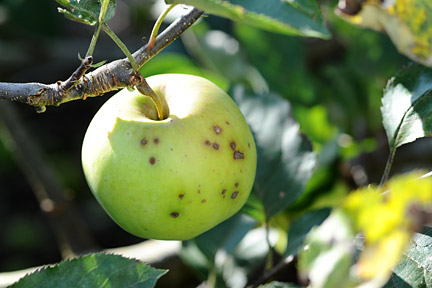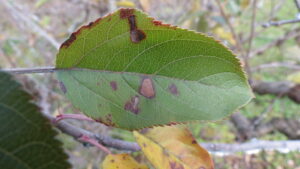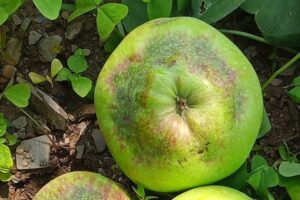Discover the ins and outs of bitter pit in apples and learn the practices that promise improved yields and a healthier harvest.
Introduction
As a dedicated apple grower, you strive to produce delicious and attractive apples to enjoy and share with others. However, there is a common physiological disorder known as a bitter pit that can compromise the appearance and taste of your apples. Fear not! In this comprehensive guide, we delve into the causes, prevention, and restoration tips for overcoming this issue in your apple harvest.

Understanding Bitter Pit
Firstly, let’s clarify what bitter pit is. This disorder affects apples, causing unsightly brown spots on the skin and underlying flesh, which often possess a bitter taste. Bitter pit primarily affects the fruit’s calcium levels due to various environmental, cultural, and crop management factors.
Causes of Bitter Pit
- Calcium Deficiency: Insufficient calcium supply during cell growth is the leading cause of bitter pit. Unlike other water-soluble nutrients, calcium does not travel freely within the plant tissue, making distribution a challenging task.
- Excessive Watering or Drought Stress: Over-watering or drought stress can disrupt calcium uptake, leading to bitter pit formation even if there is enough calcium in the soil.
- Improper Soil pH: An uneven soil pH can lead to a deficiency in calcium uptake. Proper soil pH should be between 6.0 and 6.5 to ensure optimal nutrient availability.
- Large Fruit Size: Sometimes, unusually large fruit may require more calcium than can be adequately supplied by the tree.
- Varietal Susceptibility: Certain apple varieties, such as Golden Delicious, Honeycrisp, and Northern Spy, are more prone to bitter pit.

Prevention of Bitter Pit
- Balanced Fertilization: Monitor your soil’s nutrient levels through soil tests and adjust its pH and nutrient content accordingly to ensure adequate calcium levels.
- Irrigation Management: Avoid high fluctuations in soil moisture and avoid over-watering your apple trees to ensure proper calcium uptake from the roots.
- Thinning: Thinning out the fruit load helps in supplying more calcium to the remaining apples, reducing the chances of bitter pit.
- Rootstock: Choose rootstocks that promote moderate tree vigor, as excessively vigorous trees tend to have a more significant calcium deficiency.
- Calcium Sprays or Chelates: Apply foliar calcium sprays during the fruit development stages to mitigate the risk of bitter pit. Opt for chelated calcium to improve absorption efficiency.
Restoration Tips for Bitter Pit-Affected Apples
- Remove affected fruit from the tree to avoid further calcium depletion and subsequent bitter pit formation in other apples.
- In some cases, storage can restore mild bitter pit damage. Storage of apples at low temperatures (32-35°F) can help preserve calcium levels and reduce the degradation of affected fruit.
- If bitter-pit damaged apples are still edible, consider turning the fruit into apple sauce, juice, or cider rather than discarding them completely.
Conclusion
The appearance of bitter pit in apples can leave many apple growers discouraged; however, by implementing proper cultural practices and understanding causal factors, overcoming the disorder is achievable. Ensure adequate calcium levels, proper soil pH, irrigation management, and variety selection. With these tips, you’ll be on your way to transforming your apple harvest outcome into a success story. Happy growing!



